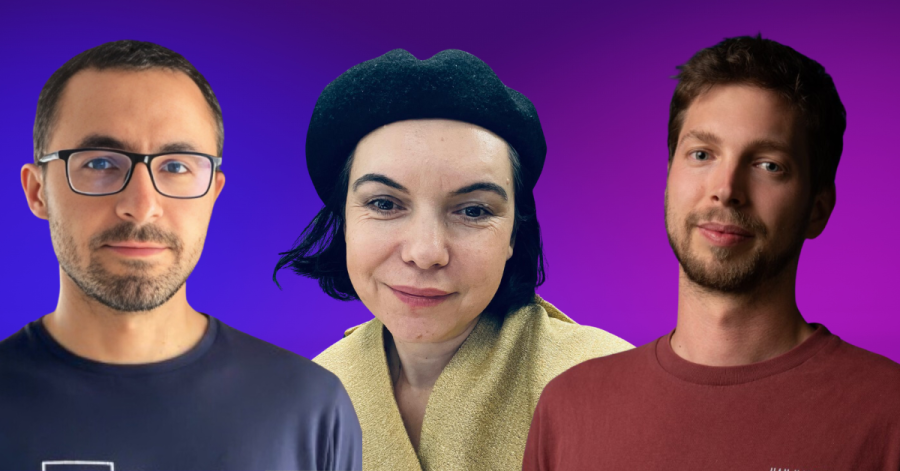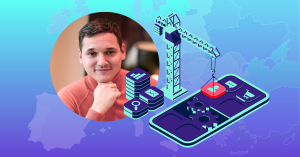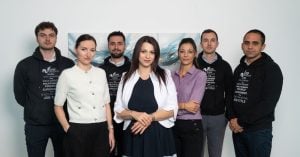The entrepreneurial journey is fraught with highs and lows, successes and setbacks. In the bustling startup ecosystem of Central and Eastern Europe, founders embark on this unpredictable path with dreams of innovation and disruption. Yet, not all journeys lead to their intended destinations.
As we know from the market, 90% of startups fail for different reasons. The overarching one is the lack of capital, but we should not overlook the product-market fit, competition, team capabilities, product complexity or even burnout in the founding team.
To understand more about what actually stays behind the decision to close down a business, we talked with three tech founders from CEE who recently went through it:
- Vasile Tiple (Romania) founded Goodlegal, a platform aimed to revolutionize legal document handling for SMEs in November 2022. Using his previous experience from UiPath, he raised €1.2M from Earlybird VC, Credo Ventures, Underline Ventures and Daniel Dines, the founder of UiPath. He closed the startup one year later, in November 2023.
- Adriana Ancuta (Romania) is an entrepreneur at heart. Even though she hit it off and found her place at the e-commerce business Fashion Days, she was still itching to build something in circular fashion. In 2019, she started ReCollections (initially under another name), a circular fashion store, for which she got €30k angel investment. After 4 years, she decided to freeze the activity.
- Bohumil Pokstefl (Slovakia) has seen and worked in a few startups. For almost 7 years, he was the CEO of Kontentino, a fast growing bootstrapped startup. With the experience he accumulated, he wanted to launch his own – Newsletter Pilot, a solution that would automate the creation of newsletters. What started as an idea in May 2023, on a night out, sunsetted 4 months and €9K later. He didn’t have any investors.
This article draws a map with the lessons learned by these founders, underlining the aspects founders should look out for.
Lesson #1: Getting investments is also about luck and timing
2 out of the 3 founders featured in this article got investments early on. Because of their network or maybe just being at the right time in the right place, signing a good check was not a hard task.
“As the first in-house legal counsel of UiPath and General Counsel, I had a very good relation with UiPath investors. So when I had the idea for Goodlegal I was able to pitch it directly to them,” says Tiple.
For Adriana Ancuta, being part of an accelerator program which exposed her to angel investors was the lucky charm.
“After we had the basis of the business, we got a €30k investment from an angel investor. It was mostly luck and good timing. I didn’t have much experience with attracting investors or negotiating terms. A few milestones later, he followed on with €10k CLA, ” Ancuta adds.
Lesson #2: Focus on the team
Emphasizing on the importance of the team that builds up a startup, Tiple advises all founders to choose wisely who’s going to be on the boat.
“We were 4 founders and 7 people in total. When hiring, make sure that the person knows how it is to work in a startup. To go in the same direction, everyone needs to be aligned and make the necessary sacrifices. If one is comfortable in a high paying corporate job, startup life may not be a good fit.”
On this idea, Ancuta highlights the importance of having a tech co-founder when going for a tech solution.
“In the pandemic, we realized things are not going to work as they did until then. We had to move online, but we didn’t have our ecommerce app ready. We tried different partnerships with people willing to help, but because me and my co-founder were not tech people, we didn’t manage to accomplish the task successfully,” she adds.
Lesson #3: Move fast with the product
When talking about what didn’t work for his startup, Tiple mentions that another mistake they’ve made was the product development and underestimating its complexity.
“The platform was pretty complex, it had 5 other platforms built in: document editor, e-signature, Meta’s AI model and others. Our end users were SMEs. Our objective was to create and stock all legal documents in one place, so all stakeholders have access to them. The documents were created by lawyers and you’d know who created it.”
The same idea is reiterated by Pokstefl.
“We were aware that competitors would implement similar solutions to their offering. However, we believe that they will offer it only in premium tiers (+200€/month). Our competitors were undercutting us, offering similar solutions for a fraction of our price. This stark reality forced us to reevaluate the viability of Newsletter Pilot,” he confessed.
Lesson #4: Make sure you are solving the right problem for your customers
When he first thought about it, Bohumil was convinced that marketers really need a solution to help them write their newsletters faster. When he asked them, he was proved right.
“To check my idea, I made a survey and shared it with marketers on LinkedIn and other relevant places. I got about 50 responses. To be sure my findings weren’t based on too small a group, I shelled out some cash for a surveying tool to get 300 more responses. The results were clear: 70% of newsletters mostly promoted blog content, backing up my original concept.”
But, further down the line, he realized that this pain was not really hurting.
“We had over 800 people try Newsletter Pilot, but most of them never came back or returned infrequently. This makes sense when you only create newsletters twice a month.”
Another business, same challenge: “We ended up with a lot of clothes in stock. The “beautiful” thing when you also have a brick and mortar store is that you often interact with clients and get their feedback. Most of the time they were mentioning clothes they’d like to buy, but we didn’t have them. So we procured them, but they never came back to buy them,” details Ancuta.
Lesson #5 Focus your energy on what matters
After there were signs the business was falling off the path, Adriana tried to give it another technology spin off.
“After the pandemic, it was hard to get back on track. I had another idea for a tech spin off. I went with it to another accelerator. It was an interesting experience, considering I am not a tech person. But because I was still hooked on saving the store, I didn’t have much time and energy left to work on the tech spin off. Here I think it was another mistake, because I didn’t give it enough chances to succeed.”
Not necessarily a deal breaker, but definitely a pocket breaker, Pokstefl would approach building the MVP in a more sustainable way.
“I recognized the importance of making the product as user-friendly and self-explanatory as possible. I reached out to one of the best product designers I know, and together, we created wireframes. For this he used a fantastic tool for advanced designs, but pricey for a pre-revenue bootstrap (€60/month). Adding to this other expenses and the time spent, it wasn’t the most effective. Next time I would use product designers once you reach at least 10.000€ MRR.”
Lesson #6 Pay attention to how much is your addressable market
When it comes to niche industries, there are a certain number of people who are already used to a specific mindset. For the rest, you have to convince them.
“One of my mistakes was to think I can get to clients without that much effort. But I learned that in circular fashion, there is a limited number of clients who are opting for pre-owned clothes. To break this wall, you need to invest much more in educating and convincing new ones. I was going so much for profitability, that I didn’t pay attention to market signs and consumer behavior. I should have focused much more on education right from the start, to make sure we get clients constantly,” explains Ancuta.
Lesson #7: Closing down doesn’t mean you’re really done
After deciding not to continue with the business, there’s one legal step left. Preparing the closing documents. From Vasile Tiple’s experience, this can be frustrating and expensive.
“Unfortunately Romania is a very complex jurisdiction and closing down a company is far more difficult than creating one. This process can take months depending on the level of operations you had with the startup.”
On the same note, Adriana Ancuta relates that even though she decided to stop the activity and freeze the business, she still has to solve different aspects.
“We still have clothes that didn’t sell. I have to give them back to the providers at some point. Also, there are debts I need to pay off.”
Lesson #8: Know when to pull the plug
Not giving up is in any entrepreneur’s DNA. They just have to try one more thing and regroup the business. And sometimes, having someone telling you to let go can be the convincing drop.
“Closing down the company was a decision we took in agreement with our investors. There were many signs we were not on the right path, including a decentralized team, miscommunication, and losing motivation,” explains Tiple.
Same applies for Adriana Ancuta.
“In the end, I talked with my investor and decided to stop the activities. I still tried to get it back on track, but it didn’t work out. I got some good lessons from this experience and applied it to Flyst, a new tech solution I am building,” she explained.
For Bohumil Pokstefl, the market took the final decision and he was open to see it.
“We decided to shut down Newsletter Pilot for several reasons. The problem wasn’t as painful for our audience as we had initially thought. The problem wasn’t frequent enough to create a sustainable user base. The market was over competitive, making it challenging to find a unique niche.”








